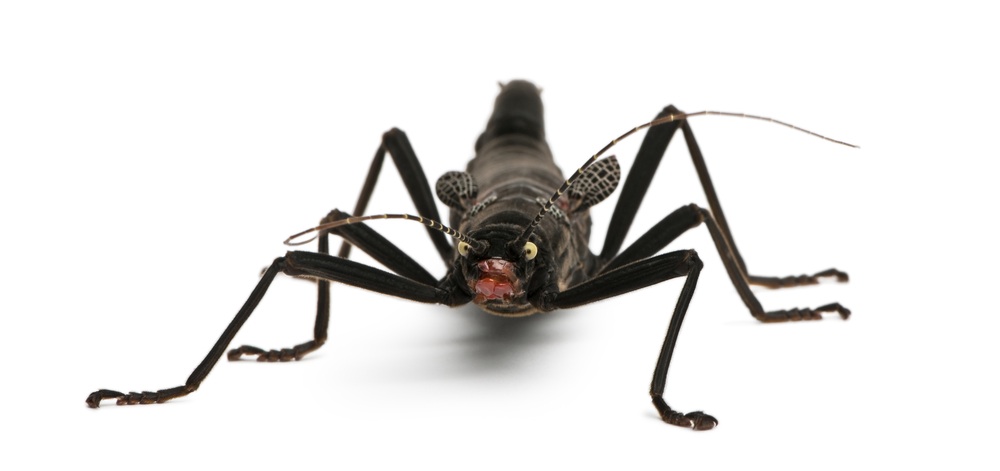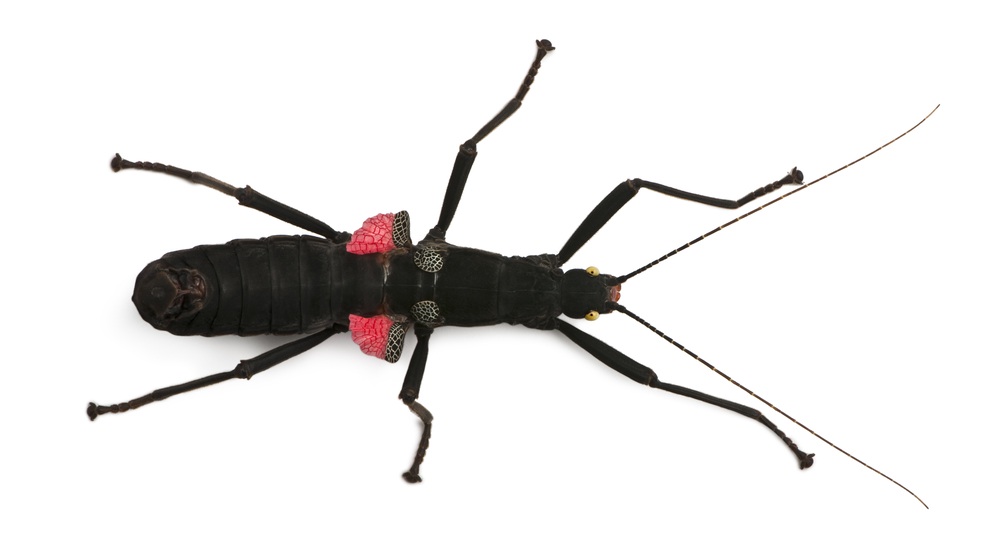Meet Black Beauty

This Peruvian stick insect ranks as one of the most unusual and distinctive species available to hobbyists today, and has become one of the most widely-kept of the South American phasmids.
The black beauty stick insect (Peruphasma schultei) is known to exist only in a tiny area of 5ha (12 acres) in the Cordillera del Condor region of northern Peru, at altitudes between 1200-1800m (4000-6000ft). It became known to science for the first time just six years ago, being named after an amphibian expert called Rainer Schulte, who originally discovered the species.
Its highly distinctive and attractive appearance, with its velvety-black body, has helped to ensure its popularity. Its eyes are yellow, but perhaps the most unusual feature of this species is its vestigial (non-functional) wings. At rest, these broad, leaf-like structures are rounded and crossed with a patterning not unlike that of a spider’s web.
In the case of the hind wings though, there is a trace of red colouration visible at their back edge. If raised, the striking crimson-red flaps that are normally out of sight will suddenly emerge into view. They probably play a role in confusing a would-be predator.
In addition however, these stick insects also have the ability to squirt an irritating substance from glands located at the back of the head. Handling should therefore be kept to a minimum, and they should never be held near the eyes. As a further precaution, wash your hands after picking them up.
Care
These phasmids do not need any complex housing - simply a well-ventilated enclosure. They will thrive at typical room temperature, with a relative humidity reading on the dry side, between 40-60%. In the wild, their main food is believed to be the leaves of the pepper tree (Schinus).

Like most stick insects however, they can be maintained easily on privet (Ligustrum vulgare) throughout the year. They will also eat honeysuckle (Lonicera) and some breeders have also reported success offering lilac (Syringa) and forsythia, but these shrubs will lose their leaves in winter, making them less valuable as food plants.
Place stems of the food plant in a narrow vessel, filled with water, and stuff the top area with tinfoil, so there will be no risk of even small nymphs drowning themselves here. A light spray each day of some of the leaves will provide the stick insects with a safe source of water. They like to remain off the ground, so provide branches for climbing in their quarters as well. More information about housing stick insects in general can be found here.
Breeding

Line the floor of the enclosure with white paper, as this will help to show up their eggs, which like those of most stick insects resemble seeds in appearance. These are laid in batches of between 5-10 eggs a week, with a female laying around 100 in total.
The eggs do not need damp conditions in order to hatch. In fact, they can simply be collected and transferred to another enclosure, with the young nymphs emerging here after a period of 3-5 months.
It will then take another 5-6 months before they are fully mature, being duller in colouration up to this stage. Females can be distinguished by their larger size as they grow, averaging about 7cm (2.75in) long when adult. The lifespan of these phasmids is usually between 1-2 years.